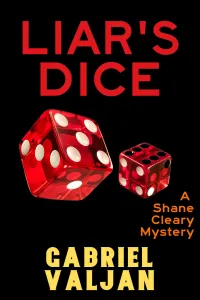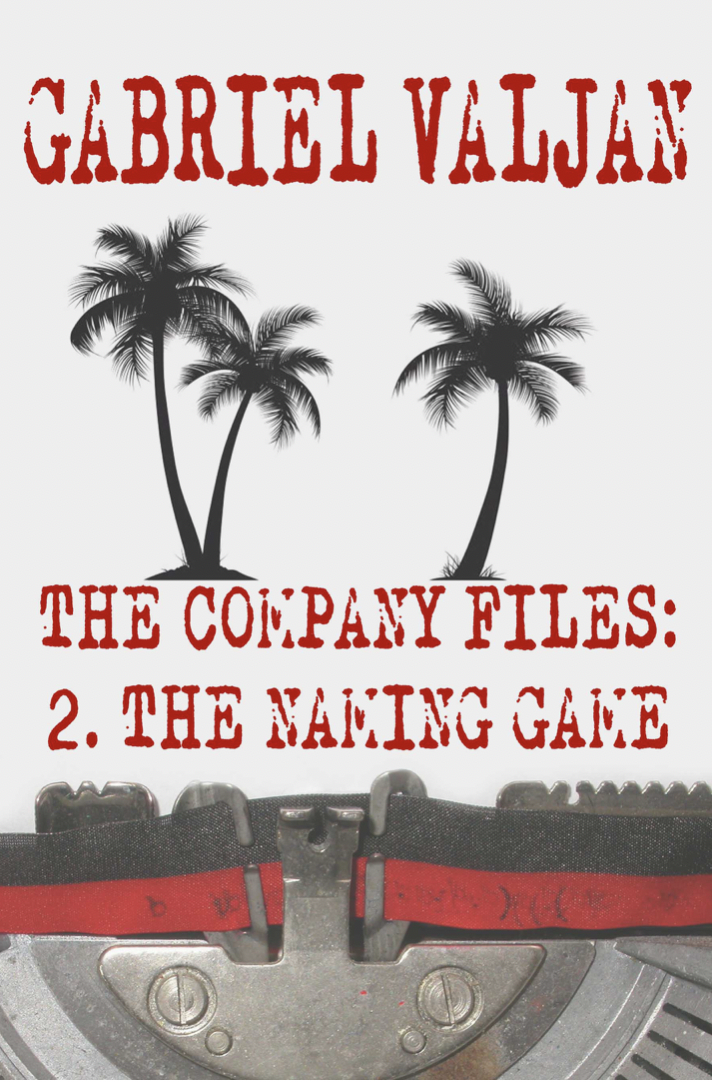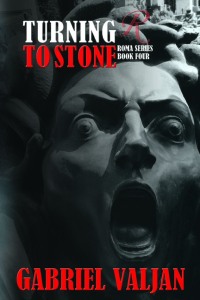“With all my ideas and follies I could one day found a corporate company for the propagation of beautiful but unreliable imaginings.” – Robert Walser.
Authors have all heard the advice: have a plan and the mental agility to modify it for the unexpected. Good advice, in general, but it is too naive, too vague. There are ten brutal reasons why novelists never get published. This essay is a postprandial digestif for those happy few, those demented few who have managed to lob their manuscripts over the transom. The glorious, magnificent Plan has been executed according to the latest scientific findings about when to Facebook, Tweet, and send e-mails, yet success eludes the author. Literary success itself invites mixed metaphor. Sports and restaurant dining come to mind. Athletes, their fans, and the rituals they use for Game Day are one metaphor; the other metaphor is knowing the right people, like the haughty maître d’, who might get you that table near the swinging doors, or just steal the money slipped into his palm. The advice when success does not happen is to revise the plan.
Athletes are like writers. Both have spent endless hours at work. None of it happens overnight. Every athlete points to Pop Warner or to Little League as the place where the spark was first ignited. The athlete gets older, gets better, and learns through trial and error that the game is more than just practice and repetitions. The sport is emotional, spiritual; and it is something more – it is Existence. Athletes collect trophies, regional titles, and scholarships. Writers are no different. They, too, start out small: praise from a teacher, a small publication in the school or town paper; then it is the literary journals and magazines. The thrill of the name in print is the same as the name on the sports jersey. You are somebody. You can do something few people can do, whether it is a triple flip on the balance beam with a nail-biting dismount, a slam dunk, catching a ball hurled like a missile, yards down field, or you can turn a phrase, tell a story in six words, like Papa Hemingway. You have: It. The world is your oyster if and only if you can get the table, any table; if and only if you can avoid injuries; if and only if the mega-agent or a waiter notices you.
The game is more than the individual; it is tribal and it involves teamwork. The player has to trust others, such as the coach. The athlete also has to work well others, including the team’s prima donna. The writer is no different. He or she has to trust the agent, and the editor, who does devastating violence to their work. Oh yes, athletes and writers are also superstitious creatures because the world they live in is this irrational world. Things will go wrong. Athletes will wear the same socks, roll tape exactly the same way every time, dance the ritual dance; but things don’t pan out. The ball gets bobbled. There are unfair penalties. Writers will use the same pencil or pen and write in longhand, on a legal pad with exactly the same shade of yellow each and every time. They drink from the same coffee mug. They weather bad reviews. They blog. They tweet, but the book does not sell. Some pundit will say that there is no such thing as bad luck, only a bad plan. An oyster is an oyster and not a dry puck of a scallop.
There was game, but no Brand. Forget about Franchise, the corporate cousin of Brand.
Brand is not a new word. The verb form is violent and territorial. Ranchers branded cattle to identify their property. The inference is that there were thieves. This notion of “protect your brand” seems to me like a longhorn trying to protect its tattoo. Sports teams have a brand, with their recognizable combination of colors and mascot on the sideline or on the side of the helmet. An athlete may have his or her name on the jersey, but it is the individual subsumed into the collective. Brand is, therefore, visual, and iconic, an allusion to something greater. Today, Brand is also property, also symbolic. Franchise, a term associated with fast-food chains and convenience, is also applied to athletes and writers. The commercialization, corporatization, and mass-production of success did not start with the taming of the frontier. Language changed first. E.B. White had warned writers years ago not to give in, to avoid temptation because “the language of advertising enjoys an enormous circulation…it is the language of mutilation.” Don Draper has arrived at the office to resuscitate market share, shift the paradigm of perception. He has a plan.
James Patterson, author and former ad exec, revolutionized the marketing of authors. Jonathan Mahler’s 2010 article, James Patterson Inc., is a revelation and a cautionary autopsy of Art meets Commerce. Patterson is the Concept Man. He transplanted the idea of a sales pitch, a catchy premise, and marketing analyses to publishing. I’m certain his first novel, The Thomas Berryman Number (1976) earned him his invitation to the boardroom. He must have known the maître d’.
Mister Patterson sits like Mistah Kurtz at the head of his private empire, at a table of PR specialists, marketing specialists, multiple personal assistants and editors, bestowed on him by Little, Brown & Co., a division of the Hachette Book Group. It’s an “unconventional relationship,” Mahler wrote, but it is not. Patterson is the coach, prima donna quarterback, shepherd, and writer all incarnated in one individual. He supposedly created a Brand, Alex Cross, and parlayed it into a lucrative franchise. Patterson did not create a Brand — the resources of Little, Brown & Co. did that. The same resources many authors will never see or know.
Good for Mr. Patterson, but there is one disturbing problem here: he has a team of writers, like minions, doing his work. He has a band of merry writers imitating him. The covers of the books will say “James Patterson and Maxine Paetro,” “James Patterson and Marshall Karp,” …and “Howard Roughan,” “David Ellis,” “Michael Ledwidge,” and others. At least Georges Simenon, who rated number nine on the list of most prolific writers, wrote his 200-plus novels. The point is that the Patterson experience is not an anomaly. Curtis Sittenfeld, the author of Prep, received the same spa treatment, although Team Prep was not as extensive. Patterson’s books have been appearing at a rate of three to five a year since 1976. He had 51 novels as of 2010. Hachette has made a handsome ROI — return on investment — on Patterson. About $500M in 2010. EL James’s success with Shades of Grey would earn every Random House employee a $5,000 bonus. Not bad for a book that had begun as fan fiction and first published as blog posts until it went to the spa for treatment.
The assembly-line production of books begs the question: Which sentence on any given page is a genuine pearl, or belongs to the co-author? Will the real author please stand up? Brand, in this instance, reeks of collaborative effort, yes, but little individual creation. There is the manure’s whiff of greed until the day the cash cow wobbles home, ready for destruction. The creative act is the Concept with the hard work delegated to a posse of writers. It would be one thing if Brand were a visual, like a unique set of colors for a cover or an imprint that a reader can spot downfield on the shelf, but it is not. I doubt that it is the renaissance guild of a Master training apprentices. The Patterson style or touch, however that may be defined, has disappeared into the mist of newsprint on the page.
The New Yorker is a brand; it implied a certain style and humor. Black Lizard is a brand: it is the Valhalla for crime fiction writers. Everyman’s Library is a brand, a stepping-stone, to the Hall of Fame; the Pléiade for American writers, the Library of America editions. Death is a perquisite, although Brand now says that this is not true. Robert Ludlum died in 2001. Ludlum is a Brand, a Trademark, and a Franchise. Mr. Ludlum cannot attend his publisher’s meetings, but his literary executors do and, unlike Patterson, Jason Bourne lives, as does Ludlum, through the work of co-authors Kyle Mills, Eric Van Lustbader, Jamie Freveletti, Paul Garrison, and others. The unintentional Concept Man writes from the grave. Raymond Chandler may have left Robert Parker a chapter or two of Poodle Springs, but Parker himself, who had many more books in him, has his own crew of ghostwriters who ferry his books across the River Styx. Parker died in 2010. V.C. Andrews is another writer in the roll-call of a top-earning dead authors.
Mega-author Tom Clancy is a Franchise of epic proportions, from a stable of authors to video games. The only thing missing is the action-figure doll. Somewhere along the way after his first novel, Mister Clancy met Gogol’s Chichikov and got a good deal. Clancy sold the rights to his name. It seems that the maître d’ sat Mr. Clancy at the table with ghostwriter David Michaels a.k.a. Grant Blackwood. I should note that researching the ghostwriters involved in Tom Clancy productions reads like a le Carré novel: secretive, twisted, and somewhat sinister. That favorite corporate word “transparency” need not apply here. The Clancy name looms in large font over the co-author on his book covers. Patterson, by comparison, seems gracious.
It is one thing when another writer comes in to patch the grass, but another altogether when he or she does the whole lawn. The art of fiction has become the con game of fiction. There are Brands and Franchises. There is Stephanie Meyers. EL James and Suzanne Collins are two sisters who have cornered the literary stock market with their series, Brand, and Franchise. EL James’s blog version of Fifty Shades was repackaged, the names changed, and disbursed in a first edition that had serious errors (“canning” for “caning” is my favorite) that made reading both a form of literary masochism and irony. With or without ghostwriters for EL, I do not know. Copyright laws can’t stop the Jane Austen and Ian Fleming reboots. I’ll stop there with the examples.
The ethical thing may be to put the co-author’s name on the cover, but for the publisher it is easy money, like fast food, this perpetuating a form of artistic fraud. For readers, though, it is the loss of a voice that they had come to love and now have seen sold out. It is different than mere commercial success. Charles Dickens made a fortune from serializing his novels, yes, but he also charged high fees on his reading tours, money which his publisher tried to deprive him of. It is no different than a copy of a painting hung on the wall. There is something so creepy, so Frankenstein-with-an-Ouija-board, about new titles on the shelf years after the author has died. The author with a series can hope for a Brand and Franchise, hope for a gaggle of assistants, a PR budget, but the one-off author is standing outside with reservations. The author can hope for the best table and for what the ad-men say, Location and network.
Don Draper has left for the day. There is no plan, only Luck and the maître d’.














